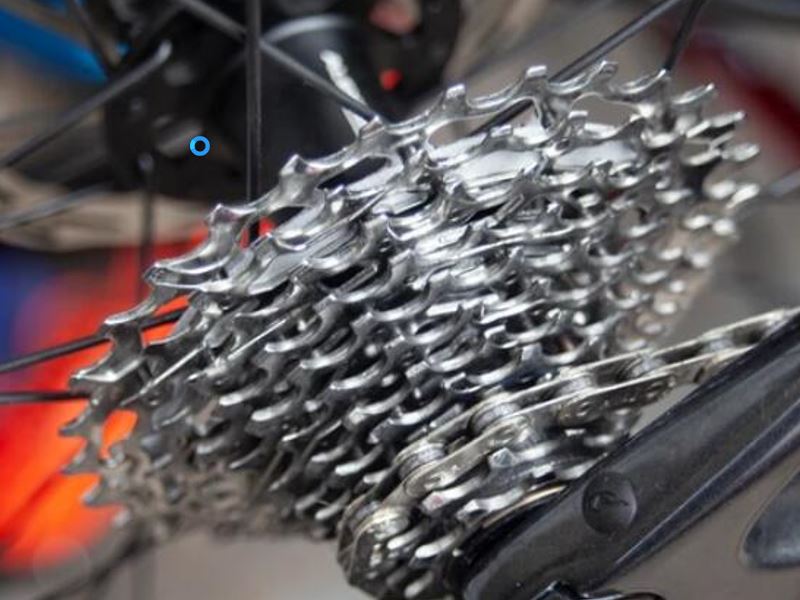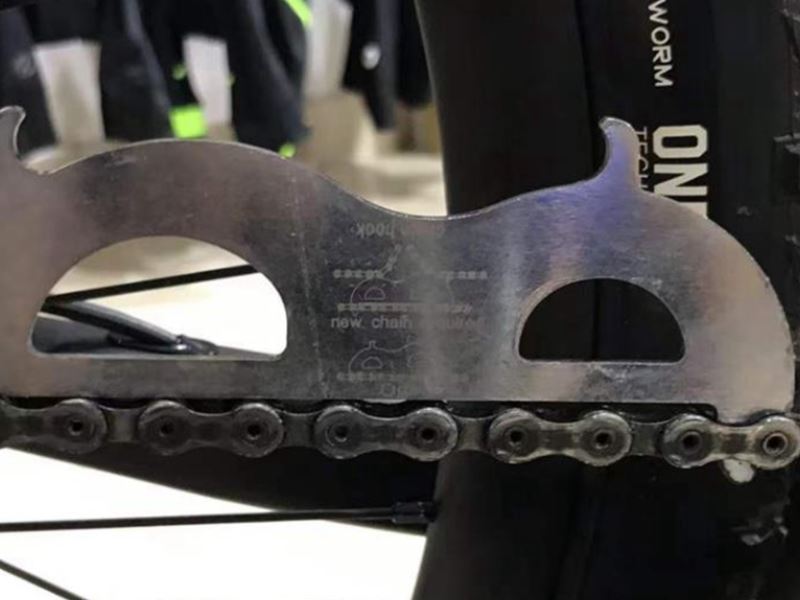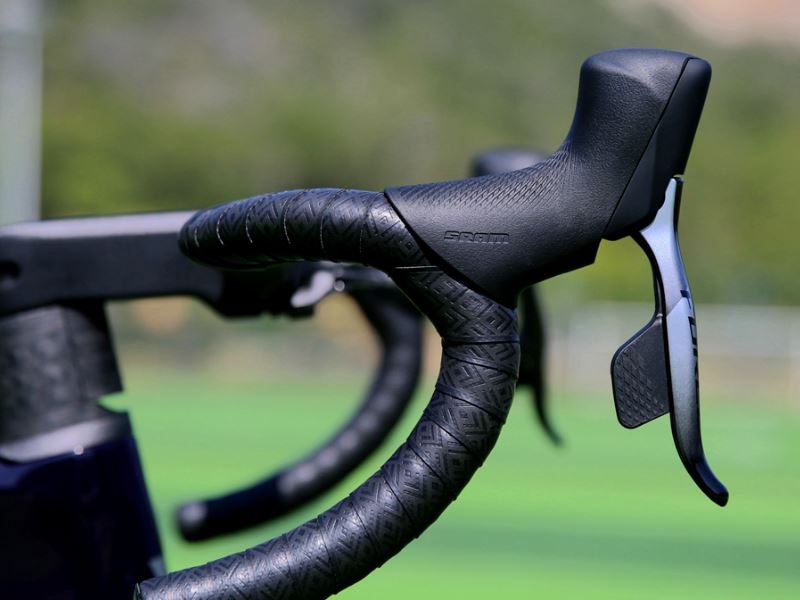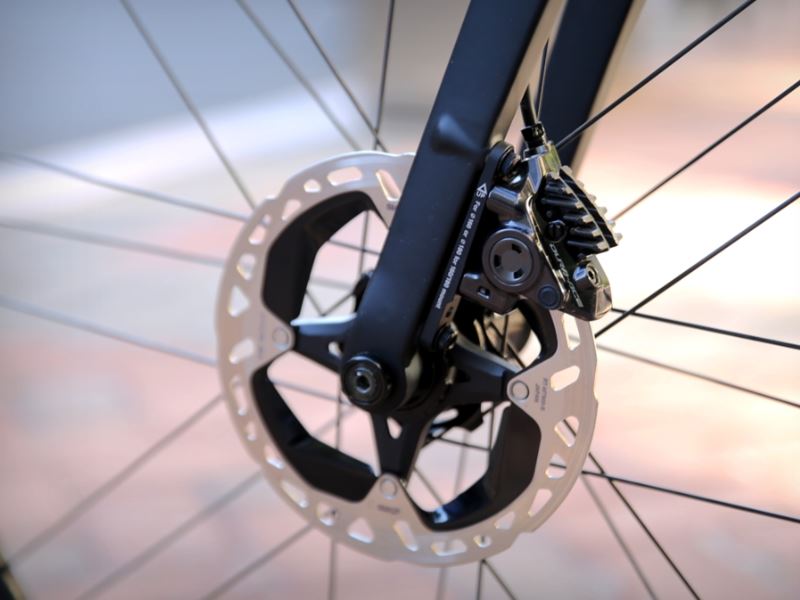by Tiffanybikes
Share
by Tiffanybikes
Share

The chain is an integral part of the drivetrain on a bike, and while it works relatively simple, there’s actually a lot of technology to make sure it engages perfectly with the chainrings on the crankset and the cassette in the rear for smoothness when needed Shift. Here are some things to know about bicycle chains, including chain construction, compatibility, chain length, and more.
What is the structure of a bicycle chain?
A chain consists of a series of links. Most chains on the market have alternating wide and narrow links, each with two side plates that are held together by rivets (also known as pins), and a roller in the center portion of each rivet, in some chains, there is a separate bushing on one side of the roller. Most chains are now equipped with Velcro for easy replacement and removal.
The standard distance or pitch between the links of a bicycle chain is ½ inch (12.7mm), but there are also chains that use metric pitch (10mm). The inner links of bicycle chains are narrower than the outer links, and the space between the links is narrower, through the alternating wide and narrow sprocket teeth, to ensure that the chain is firmly connected to the cassette and chainring. The teeth of the multi-speed chain have the same width. It’s worth noting that the chain roller widths are almost the same for different speeds: 2.38mm for 5- to 8-speed chains, and 2.18mm for 9-speed and above.
Chain width
The side-to-side width of a bike’s chain complicates things as component brands increase the speed of their drivetrains. They added the extra cassette needed in two ways: first by making the rear hub wider. To accommodate the extra hub width with the same distance between the chainstays, this meant the rear wheel was increasingly asymmetrical. Second, the cassette gets tighter and narrower, so the chain gets narrower to match it, which limits their compatibility between drivetrains with different gear counts, so you can’t run a 12-speed chain with an 11-speed cassette.
The chain widths for different numbers of gears are:
13 speed – 4.9 mm
12 speed – 5.3 mm
11 speed – 5.5mm
10 speed – 6 mm
9-speed – 6.5 to 7 mm
6, 7 and 8 speed – 7 mm
Chain Compatibility
In the past, chains of the same speed could often be mixed between different brands of shifting, but now it is more targeted. For example, a SRAM Eagle 12-speed chain cannot be used with a 12-speed road rear derailleur and vice versa. While some 11-speed Shimano and SRAM components can be mixed in, they certainly won’t match like stock.
The Shimano 12-speed road groupset uses the same Hyperglide+ chain as its 12-speed MTB groupset. It has specific design features that promote faster gear changes. Shimano also makes a Linkglide chain, which is designed to work on 10 or 11 speed electric-assist bikes. Replacement chains from chain brands like KMC are usually compatible across all kit manufacturers.
Chain length
A brand-new chain usually has 110 links or more, which is more than most bicycle applications require, so it needs to be cut off before loading. The exception is high-pivot mountain bikes, which typically require longer chain lengths and may require the purchase of two chains.
Chain material
Most chains are made of steel, so if they get wet and don’t get oiled in time they will rust. Some of the more expensive chains have a finish that helps avoid rust, improves durability, reduces friction, and looks better. Chains made of titanium are now also available, which will be lighter in weight. For example, KMC’s top-of-the-line chain is coated with titanium carbon nitride, which KMC says reduces friction, and comes with a variety of different color outer and inner plates.
The design of the chain outer plate varies by brand and chain model, and more expensive chains often have chamfered edges on the side plates, as well as hollow panels, hollow pins, to further reduce weight.
Another option is a chain that has been pretreated to reduce friction, like Silca and CeramicSpeed. They claim to be usable in dry conditions and are the choice of regular race users.
Does the chain have a specific direction?
The direction depends on the brand and kit, chains used for a smaller number of gears are usually not directional. Recently released chains for more gears, some are directional. In some cases, the outer link may be grooved but the inner link will not, in which case you need to make sure they end up on the outside when you install the new chain on the bike. For SRAM’s 12-speed road chains, the flat-top design means they need to be mounted the right way.
If using a chain linked together with a Velcro, be sure to check that it is directional. Like Shimano’s 11- and 12-speed options, which have arrows pointing in the direction of chain travel.
The “out-of-stock tide” brought about by the epidemic has made it difficult to find a bike in the cycling circle. Even if some brands can order a bike, the delivery time varies from a few months to more than half a year. There are many bike fans who can’t wait to turn their attention to […]
Whether you’re a big cyclist or a novice cyclist, who hasn’t made some mistakes on the bike? For example, when the new bike is installed, the vehicle accessories are installed incorrectly, the equipment model is not matched when the accessories are upgraded, the fault judgment is wrong, and there is wasted effort in disassembly and […]
With the full popularity of the disc brake system for road bikes, the road bike market has completely resolved the debate between disc brakes and rim brakes. It can be said that disc brakes have completely taken over the rim brakes. But in road disc brakes, there is another debate, so is it better to […]
Today, most mountain bikes on the market are equipped with front fork shock absorbers, and even many gravel bikes are equipped with micro-travel shock absorbers in order to cope with more complex road conditions. There is enough suspension travel on a bicycle to measure the bumps that the bicycle can absorb, so what kind of […]



